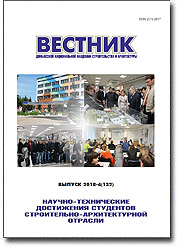The Influence of Electrostatic Separation to the Dispersion of Fly Ash Thermal Power Plant
Abstract: The study of the influence of electrostatic separation on the properties of fly ash TPP, used instead of cement in concrete has been carried out. Electric separation of fly ash from the Zuyevka thermal power station was carried out with the help of a chamber electrostatic free fall separator. Granulometric composition enriched in fly ash, thermal power plant was determined by laser diffraction using a laser diffraction particle size analyzer Analizette-22 compact. It was found that the dispersion of ash, as well as the content of unburned coal particles after treatment in an electric free fall separator have different values for samples taken from different areas of the separator relative to the position of the electrodes.
Keywords: active mineral additive, fly ash of thermal power plants, electrostatic separation, dispersion.
Pages: 203-208.
For citation:
For citation: Petrik, I. Yu.; Khristich, Ye. S.; Gubar, V. N. [et al.]. The Influence of Electrostatic Separation to the Dispersion of Fly Ash Thermal Power Plant. – Text : electronic. – In: <em>Proceeding of the Donbas National Academy of Civil Engineering and Architecture</em>. – 2018. – Issue 2018-4(132) Scientific and technical achievements of students of the construction and architectural industry, volume 1, 2. – Р. 203-208. – URL: https://donnasa.ru/publish_house/journals/vestnik/2018/2018-4(132)_t2/st_16_petrik_khristich_gubar_kornienko_tom_2.pdf (date of access: 20.05.2025). – ISSN 2519-2817.

Issue 2018-4 (132)
Journal: Proceeding of the Donbas National Academy of Civil Engineering and Architecture
Publish house: Donbas National Academy of Civil Engineering and Architecture
Journal: Proceeding of the Donbas National Academy of Civil Engineering and Architecture
Publish house: Donbas National Academy of Civil Engineering and Architecture
